Growing up in Northern California, I remember chatting with my father as he tied his pagri. We started in the bathroom where he brushed and tied up his beard under his chin. We then moved to the dresser mirror in my parents’ bedroom, where he stared at his reflection, carrying on a muffled conversation with one end of 15 feet of black starched cloth anchored in his mouth. He repeatedly circled his turban in a rhythm across his left temple and back around up to his right temple until the material was neatly wrapped around his head, without wrinkles. These morning chats often started with requests for poonee — the stretching out of the turban by holding two ends in my hands while my father held the other two, pulling and tightly rolling to create the neatly folded material necessary to tie his turban.
Kitchen conversations amongst my mother and her sisters — my masis — occasionally drifted to how handsome some young Sikh men were, with admiration for how neatly they tied their pagris. They maintained this refrain when my younger brother passed through wearing a patka, a small turban for boys. “Look at this sardar!” they would say, using a word to refer to a prince or leader. “So handsome. So smart-looking!”
Our backyard was a haven for my father’s turbans before he went into the world again. My mother washed all of his turbans as a special load to take advantage of the day’s sunlight, drying them on a clothesline strung between the cherry and pomegranate trees. The transparent material rainbowed the sunlight in blues, reds, blacks and whites as I zigzagged my way through the cascades of damp fabric.
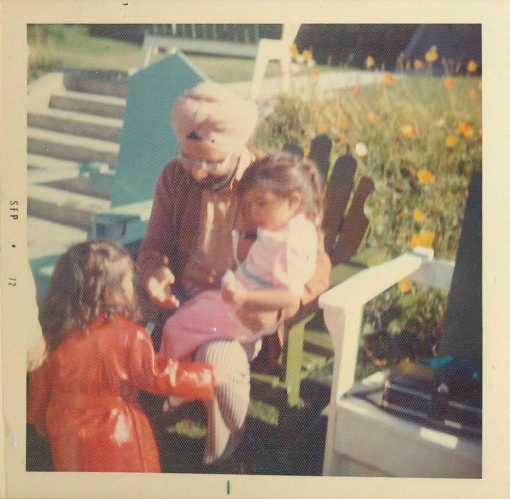 The author's childhood family photos from the early 1970s. All photos courtesy of the writer.
The author's childhood family photos from the early 1970s. All photos courtesy of the writer.
According to the Sikh faith, the human form, including hair, has been created in complete perfection, and it isn’t a Sikh’s place to alter this perfection. Sikh men and some Sikh women preserve unshorn hair by tying it in a topknot that is neatly secured by a turban. For some Sikhs, it serves as a reminder of their history, their heritage, their spiritual legacy. It connects them to ancestors who have set extraordinary standards to serve the world with courage and compassion. It is a clear, distinct signifier of a Sikh, making their intentions transparent to all.
Most days, my father wore black turbans, red ones for celebrations and navy blue for a change of pace. I remember watching his turban sway to the then-new Journey song “Don’t Stop Believin’ ” in the car, perhaps to show me that we could connect on something.
My parents immigrated to the United States in 1969 from Punjab, India, to practice medicine, and they looked for a community that reflected their cultural roots. My uncle directed them to Yuba City, a small Northern California town, also known as America’s Punjab. Sikhs have walked Yuba City streets since the 1920s as one of the pioneering farming communities in Sutter County. It was reaffirming to me that people both inside and outside the Yuba City Sikh community knew my father the way I did: a quiet man who prided himself on his ability to successfully help others.
These townspeople had the opportunity to know my father’s spirit and perceived his turban and beard as blending in with his quiet nature, a part of who he was: something natural, inherent and non-negotiable. It might not have been love at first sight, but eventually, after starting to know his thoughts and experiencing his bedside manner, his patients — whites, Latinos, Hmongs and Punjabis learning to live together in a farming community — developed a long-lasting affection for him. My mother, who also maintained her long hair in a full bun, built a reputation as one of the most straightforward and compassionate physicians in Yuba City. I like to imagine that it wasn’t their occupations but their natures that drew people to them. The prescriptions were just an added bonus.
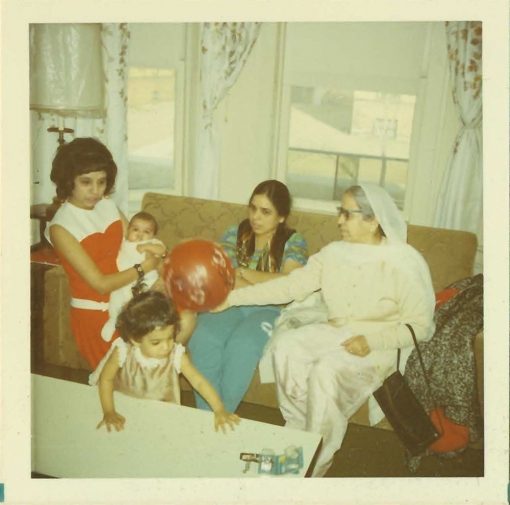
Today, I question whether this accepting and open frame of mind exists in American communities since enduring 9/11, a war with Iraq and an ongoing war with Afghanistan. Media outlets saturate viewers with images of the “enemy,” all of whom happen to be wearing turbans until, ironically, the recent report in Oslo, Norway, that profiled a blond, blue-eyed anti-Muslim Christian extremist, Anders Behring Breivik, as the bomber and shooter.
Breivik’s profile barely nudged the constructed media stereotype of the enemy away from being Middle Eastern or South Asian. On 9/11, international media outlets repeatedly flashed Osama Bin Laden’s picture next to the burning Twin Towers — an image, I believe, that is seared in our collective memory. This pairing of images, Osama and the Twin Towers, took on the following equation in the world: Muslim man plus turban plus beard equals terrorist. Within moments, Americans implicated an entire culture of people, Muslim Americans, for this terrorist act and designated the turban and beard as identifying markers of a terrorist.
Hours after the planes hit the Twin Towers, in Mesa, AZ, Frank Silva Roque shot a Sikh gas station owner and then went on to kill a Lebanese American. I was shocked. The media frenzy was defining me, my family and community members based on ignorance and fear. It was paralyzing to think that outside forces determined us to be the enemy because of our cultural and religious identities.
At the time, I was visiting my parents in Yuba City and not worried about my father. I remember neighbors coming by our home to make sure we were OK, but the territory beyond Yuba City was no longer familiar to me. I was heartbroken. I felt like a stranger in a country that was home for me.
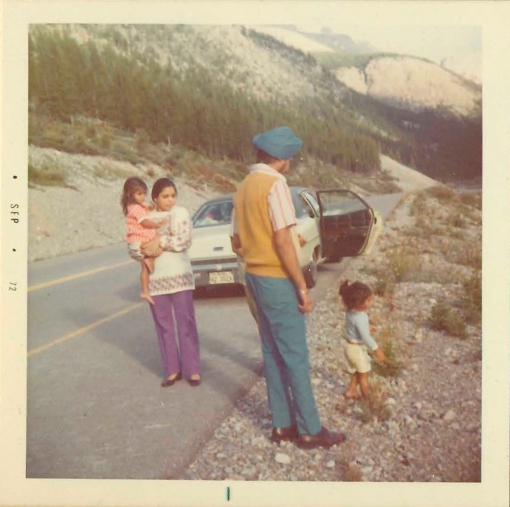
Forcing a community into silence about their experiences is another form of terror that is seldom talked about. Echoing the experiences of Japanese Americans in 1942, the social and political climate pushed Sikh Americans into an outsider position. Sikhs have an outward identity that does not allow us to hide, so our only choice is to be vocal and act on a firm resolve as Americans who have a long-term stake in this country.
I hope to raise my son, Sidak, to claim his turban as an article of faith that distinguishes him for all he has to offer the world, and yet closely ties him to his peers with an open heart. I hope I can effectively convey stories about historical Sikh heroes and heroines reaching their highest potential, as represented by the turban, a crown that has been passed down through generations. It is a crown that summons courage when he needs it, draws upon compassion for all living creatures and reminds him to live with purpose and serve mankind according to his natural talents.
As part of our daily family tradition, Sidak charges to the center of our bedroom to watch his father, Banjot, unravel and retie his turban. The bathroom doorknob substitutes for certain sleeping family members who cannot make it out of bed to help with poonee. Sidak will reach for the 15 feet of material as Banjot rolls it from both sides. Banjot will then scoop up Sidak into his arms and carry him down for breakfast. Sidak will play with his father’s beard and sometimes yank at his mustache while his father gently shoos his hands away.
This man with the identifying terrorist markers of turban and beard is the same who will brush out his daughter’s hair and secure it in a ponytail before school. Who handles all of the morning appetites armed with a spatula in one hand and a dozen eggs in the other. Who will wake up at 3 a.m. to comfort his son when he is teething. Who believes family and community are of the utmost importance in living a life.
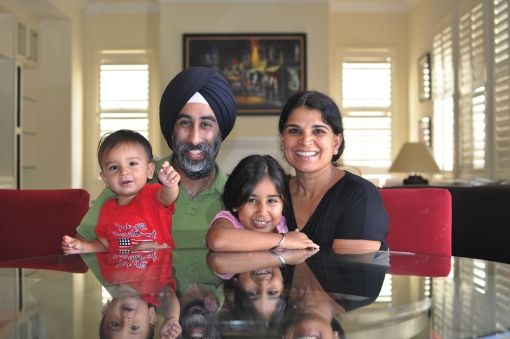 The author with her family at home in Union City.
The author with her family at home in Union City.
This March, I was silenced again by a report stating that two elderly Sikh men on an afternoon stroll in Elk Grove, CA, were shot multiple times. Surinder Singh, 65, died on the sidewalk that afternoon and Gurmej Atwal, 78, died the following month. The FBI and the Elk Grove police have categorized the murders as a possible hate crime.
I realized it is critical for me to model a mindset of self-definition and courage so my children know how to do it when they step into the world as Sikhs. I do not have the luxury of being scared or silent, as I was during 9/11. I have to shift to a place of action so Benanti and Sidak know their fate is in their own hands, so they know they have voices they can use to stop discrimination. I want to raise children who not only define themselves according to their individual connection to their heritage but also have the courage to defend another person’s right to self-definition. This is part of what it means to be free.
Now we live in a self-defining mindset, expressing who we are before others can determine it for us. I’m willing to actively initiate conversations about my husband, son or daughter with anyone if it will create a bridge instead of distancing us.
For my family, the turban is non-negotiable. I remember my mother telling me about my uncle refusing a job in the 1970s because they asked him to remove his turban and cut his hair. My uncle said: “It’s like me asking you to cut off your nose. It cannot be done.”
It cannot be done in this household either, so we continue with an unrelenting faith. We have faith in the preschool teacher who lets my daughter know how beautiful her long hair is and keeps an eye on her during recess. And we have faith in the neighbors who drop off zucchini bread at our doorstep simply because we are the neighbors. When Banjot comes home from a long day and takes off his turban to relax, giving the children a tired but welcoming smile, we have faith.
Meeta Kaur is a writer and community advocate living in the San Francisco Bay Area.







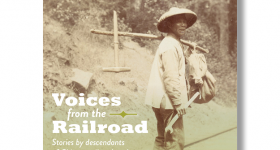


Comments